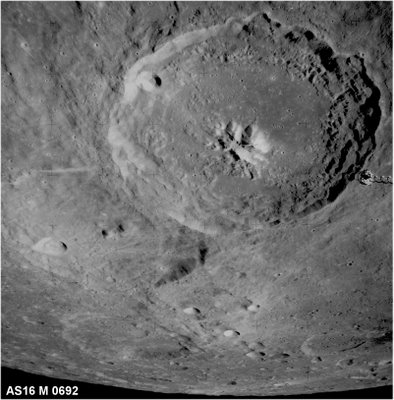 Theophilus is a prominent lunar impact crater that lies between Sinus Asperitatis in the north and Mare Nectaris to the southeast. It partially intrudes into the comparably-sized Cyrillus crater to the southwest. To the east is the smaller Mädler crater and further to the south-southeast is Beaumont crater. To the west-northwest is Mons Penck, a peak forming a promontory arm on the Rupes Altai.
Theophilus is a prominent lunar impact crater that lies between Sinus Asperitatis in the north and Mare Nectaris to the southeast. It partially intrudes into the comparably-sized Cyrillus crater to the southwest. To the east is the smaller Mädler crater and further to the south-southeast is Beaumont crater. To the west-northwest is Mons Penck, a peak forming a promontory arm on the Rupes Altai.The Rev. T. W. Webb described this as "the deepest of all visible craters". The rim of Theophilus crater has a wide, terraced inner surface that shows indications of landslips. The exterior has a wide, wrinkled rampart that descends about 1.4 kilometers to the surrounding maria. The largest impact crater of significance on the wall is the small Theophilus B on the inside of the northwest rim. Most of the rays from this crater have been weathered away, although a few are still visible.
The floor of the crater is relatively flat, and it has a large, triple-peaked central crater that climbs to a height of about 2 kilometers above the floor. The western peak is designated Psi (ψ), the eastern Phi (φ), and the northern peak is Alpha (α) Theophilus. The western slopes of this ridge are wider and more irregular, whereas the peaks descend more sharply to the floor on the northern and western faces.
The Apollo 16 mission collected several pieces of basalt that are believed to be ejecta from the formation of the Theophilus crater.
Wikipedia
 Apollo 16 Mapping camera.
Apollo 16 Mapping camera.

